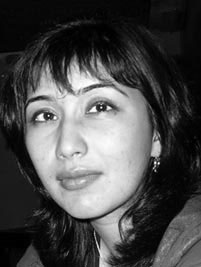
Dr. Radha Nair-Roberts
Now at Cardiff University
Email:
I was in the Behavioural Ecology Research Group for my DPhil (1999-2004), during which I investigated the existence of neural adaptations related to the performance of brood parasitism in South American cowbirds (further details below). Following that I worked as an MRC postdoctoral researcher in the Systems Neuroscience group headed by Dr Mark Ungless (now at the MRC Clinical Sciences Centre, Imperial College London), investigating the physiology and anatomy of midbrain dopaminergic neurones that participate in reward-signalling pathways. In September 2006 I left Oxford to take up a position at Cardiff University, investigating possible prophylactic treatments to slow or halt the progress of Alzheimer’s Disease. Further details on my research into neural adaptations to brood-parasitism are below.
Brood parasitism is a form of breeding in which the parasite lays its eggs in the nests of another species, the host, which incubates and rears the young. The habit involves special behavioural and cognitive demands: parasites patrol the home range, remembering the location and status of potential host nests, updating this information after each egg is laid, a process known as book-keeping. In the parasitic cowbirds (Molothrus sp), seasonal and sexual variations in the performance of book-keeping are associated with specific anatomical changes in the hippocampal formation, a brain structure involved in spatial memory. Parasites have larger hippocampal formations than related non-parasitic species (Sherry et al 1993, Reboreda et al 1996). Within parasitic species where only the female performs book-keeping, females have enlarged hippocampal formations relative to males (Clayton et al 1997). These hippocampal dimorphisms are only present during the breeding season, indicating that they may arise from seasonal neuroplasticity.
Previous descriptions of the cowbird hippocampus consisted only of gross measures of hippocampal volume. My project explored the neurochemistry and cytology of this structure in much greater detail. My most remarkable finding was the existence of a novel field of Substance P-immunoreactive terminals in the cowbird hippocampus, a structure that had not previously been described in birds (Nair-Roberts et al 2006). The relative size of this new area, which we have called the “hippocampal Substance P terminal field” (SPh), was significantly greater in 2 parasitic cowbirds than in a sympatric non-parasitic cowbird. Though it isn’t possible to draw any definite conclusions regarding the significance of these species differences in the prominence of SPh, it is possible that these differences have arisen because of an association between SPh size and parasitic behaviour.
Publications
Nair-Roberts, R. G., Erichsen, J. T., Reboreda, J. C., & Kacelnik, A. (2006). Distribution of substance P reveals a novel subdivision in the hippocampus of parasitic South American cowbirds. Journal of Comparative Neurology 496: 610–626. PDF
